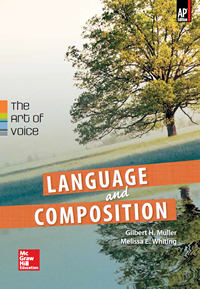
Language and Composition: The Art of Voice (Muller and Whiting)Chapter 9: Media, Sports, and Popular Culture: What Is the Message?Chapter OverviewAs you read the essays in this chapter, consider the following questions:
We are surrounded today as never before by images, sounds, and texts—by what Todd Gitlin, who has an essay in this chapter, terms a “media torrent.” Radio and television programs, newspapers and Internet sites, MTV and video games, iPods and cell phone gadgetry increasingly mold our place in culture and society. Indeed, the power of media in our waking and subliminal lives might very well condition our understanding (or misunderstanding) of reality. Today, we can download “reality.” Today’s media universe, fueled by new technology, is transforming our sense of the world. Consider the ways in which computers permit us to enter the media stream, making us willing, even compulsive, participants in and consumers of popular culture. Video games, streaming advertisements, wraparound music, newsgroups, chat rooms, and more—all provide data and sensation at warp computer speed. Some slow down the torrent: Bloggers (a word that didn’t exist until recently) interrogate their lives and the “facts,” even holding newspapers and television news channels accountable for information. But if, as Marshall McLuhan declared, the medium is the message, then any medium, whether old or new, has the power to reflect or construct versions of reality. Perhaps Americans have moved from a print-based culture to an aural/visual one, preferring electronic media for information, distraction, and entertainment. For centuries, books were the molders of popular taste and culture. Tocqueville in Democracy in America was amazed by the fact that in the rudest pioneer’s hut could be found a copy of Shakespeare—and probably, we might add, a copy of the best seller of all time, the Bible. Today’s typical household might have more media for DVD players, MP3 players, and gaming consoles than books in a library. Of course, print media—say, a book on the ways in which major political parties manipulate the media—offer us the opportunity to scrutinize facts and sources in ways that shock jocks on radio, or talk show hosts on television, or participants in chat rooms cannot. The medium or source from which we receive sounds, images, and text—the place from which we enter the media torrent—determines the version of reality we carry with us. We can even drown in this torrent, as people who have been captured in virtual reality can attest. The writers in this chapter invite us to enter the media torrent from a variety of places. They ask broad cultural questions about how we conduct our everyday lives and what choices we make. These questions have both local and worldwide implications, because media and their technological helpmates have created a global village permitting the instant transmission of ideas and images, as well as a subtle transfer of culture—typically American—to the remotest parts of the planet. Whether we navigate the torrent intelligently or succumb passively to the images and sounds washing over us, it is clear that the media in this century will have an increasingly significant impact on human experience. |  |















